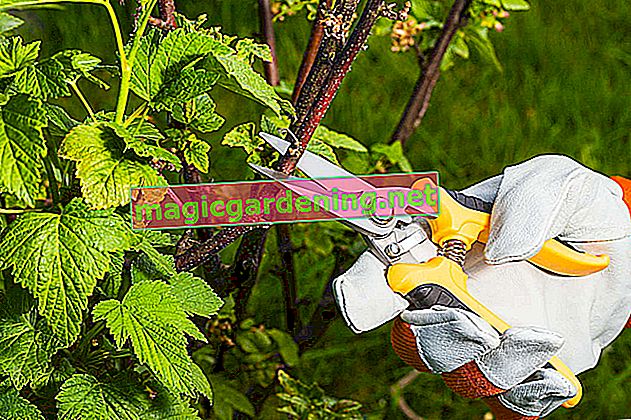
The first cut should not be made too early
Since the Japanese column cherry can be relatively sensitive to pruning, it should not be cut for the first time around two to three years after planting. However, you should not wait too long with a shape cut or a maintenance cut, since the individual cutting measures should not be too extensive. It can make perfect sense to throw out a few branches in summer immediately after flowering and then pay special attention to removing branches that show signs of disease in autumn. In contrast to many column fruits, the Japanese column cherry should not be rejuvenated during the frosty winter months.
also read
- How to cut column cherry properly - tutorial with instructions
- Different varieties of the column cherry
- The optimal care for a Japanese fiber banana
Good reasons for pruning
Many gardeners believe that, given its name, a Japanese column cherry would not need any pruning. Although the scope of the pruning measures required is usually limited, occasional interventions in the plant growth are essential. As a rule, tapering cuts, shaped cuts and cutbacks in the sense of a maintenance cut with measures that flow into one another complement each other. The following reasons make a pruning of the Japanese column cherry necessary:
- excessive increase in height (more than 5 m in height are possible)
- as too wide a column shape
- Disease and fungal attack
- Decline in the number of flowers
- branches growing too close together
Carry out cuts with care and attention
Before each cut, it should be checked whether clean and sufficiently sharp cutting tools are available. Larger cuts when removing thicker branches should be made close to the trunk without damaging the trunk itself. “Frozen” shoots should be removed in spring after the last frost. Since these are usually associated with dry periods in the case of the Japanese column cherry, you should stimulate the root growth in deeper layers of the earth by giving less and more abundant watering.
Tips
Since Japanese column cherries are relatively susceptible to disease, larger cuts to the trunk should be treated with an appropriate wound closure agent for trees after removing branches.








